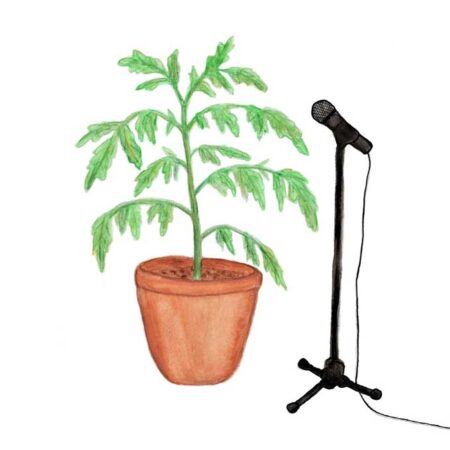This post was originally published on this site
Listen carefully, and a plant may tell you it’s thirsty.
Dry tomato and tobacco plants emit distinct ultrasonic clicks, scientists report March 30 in Cell. The noises sound something like a kid stomping on bubble wrap and also popped off when scientists snipped the plants’ stems.
When evolutionary biologist Lilach Hadany gives talks about her team’s results, she says, people tell her, “‘You cut the tomato and it screams.’” But that is jumping to a conclusion her team has not yet reached. “Screaming” assumes the plant is intentionally making the noise, Hadany says. In the new study, “we’ve shown only that plants emit informative sounds.”
Intentional or not, detecting those sounds could be a step forward for agriculture, potentially offering a new way to monitor water stress in plants, the study’s authors propose. If microphones in fields or greenhouses picked up certain clicks, farmers would know their crops were getting dry.
Previous work had suggested that some plants produce vibrations and ultrasonic emissions. But those experiments used sensors connected directly to the plant, says Alexandre Ponomarenko, a physicist at the biotech company NETRI in Lyon, France, who has detected sounds made by slices of pine trees in the lab. Hadany’s team tried something new.
She and her colleagues at Tel Aviv University set up ultrasonic microphones next to, but not touching, living plants. The team wanted to find out if the plants could generate airborne sounds — vibrations that travel through the air.
The researchers first detected the horticultural hiccups coming from plants set up on tables in the lab. But the team couldn’t be sure that something else wasn’t making the noises. So the researchers ordered sound-dampening acoustic boxes and tucked them in the basement away from the lab’s hustle and bustle. Inside the hushed boxes, thirsty tomato plants emitted about 35 ultrasonic clicks per hour, the team found. Tomato plants cut at the stem were slightly less noisy, and tobacco plants clicked even less. Plants not water-stressed or chopped kept mostly quiet.
The plants’ short sounds were about as loud as a typical conversation, but too high-pitched for humans to hear (though dogs’ ears might perk up). And each plant species had a recognizable “voice.” A machine learning algorithm the team created could tell the difference between clicks from tomato plants and tobacco plants. It could also pick out thirsty and hydrated plants.
The algorithm could even differentiate between plants when they sat in a noisy greenhouse, filled with the sounds of people talking and building renovations next door.
Hadany doesn’t know exactly what’s causing the emitted sounds; it could simply be bubbles forming and popping within the plants’ water-carrying tissues. The sounds might be akin to “someone’s creaking joints,” says Tom Bennett, a plant biologist at the University of Leeds in England who was not involved with the research (SN: 3/29/18). “It doesn’t mean that they’re crying for help.”
Still, it’s possible that other organisms eavesdrop on the noises, he says, something Hadany’s team is currently investigating. She is curious whether other plants or insects like moths, some of which can hear in the ultrasonic range, are tuning in. It’s possible moths, as well as mice and other mammals, could detect the noises as far as five meters away, the team suggests.
And tomato and tobacco weren’t the only plants that prattled. Similar sounds came from wheat, corn, Cabernet Sauvignon grapevines and pincushion cactus. “It is happening in so many different plants that grow in so many different environments,” says Ravishankar Palanivelu, a plant developmental biologist at the University of Arizona in Tucson who did not work on the study. “It seems like this is not a random thing.”
He doesn’t know if the sounds have any evolutionary significance, but, Palanivelu says, he thinks the study’s results will certainly generate some noise.

